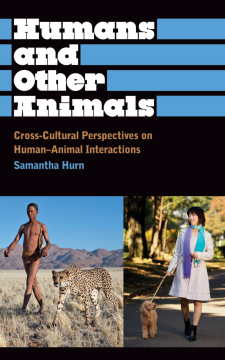
Additional Information
Book Details
Abstract
What are our attitudes towards other animals, and how does this affect our humanity?
This work of anthrozoology explores the myriad and evolving ways in which humans and animals interact, the divergent cultural constructions of humanity and animality found around the world, and individual experiences of other animals.
This book looks at case studies covering blood sports (such as hunting, fishing and bull fighting), pet keeping and ‘petishism’, eco-tourism and wildlife conservation, working animals and animals as food. It addresses the idea of animal exploitation raised by the animal rights movements, as well as the anthropological implications of changing attitudes towards animal personhood, and the rise of a posthumanist philosophy in the social sciences more generally.
'A refreshingly novel text for beginning students, as well as stimulating a wider interest in an intelligent discussion of human-animals relations'
Roy Ellen, Professor of Anthropology and Human Ecology, University of Kent Canterbury
Table of Contents
| Section Title | Page | Action | Price |
|---|---|---|---|
| Cover | Cover | ||
| Contents | v | ||
| Series Preface | vi | ||
| 1. Why Look at Human–AnimalInteractions? | 1 | ||
| 2. Animality | 12 | ||
| 3. Continuity | 27 | ||
| 4. The West and the Rest | 41 | ||
| 5. Domestication | 55 | ||
| 6. Good to Think | 70 | ||
| 7. Food | 84 | ||
| 8. Pets | 98 | ||
| 9. Communication | 112 | ||
| 10. Intersubjectivity | 125 | ||
| 11. Humans and Other Primates | 139 | ||
| 12. Science and Medicine | 151 | ||
| 13. Conservation | 165 | ||
| 14. Hunting and Blood Sports | 176 | ||
| 15. Animal Rights and Wrongs | 189 | ||
| 16. From Anthropocentricity toMulti-species Ethnography | 202 | ||
| References | 221 | ||
| Index | 250 |
